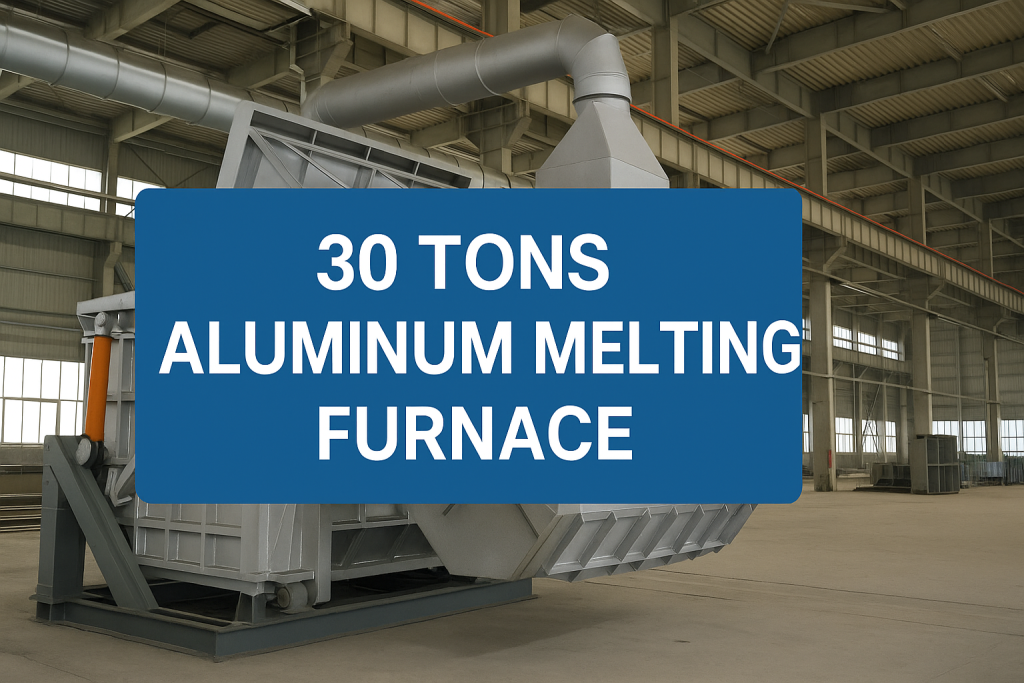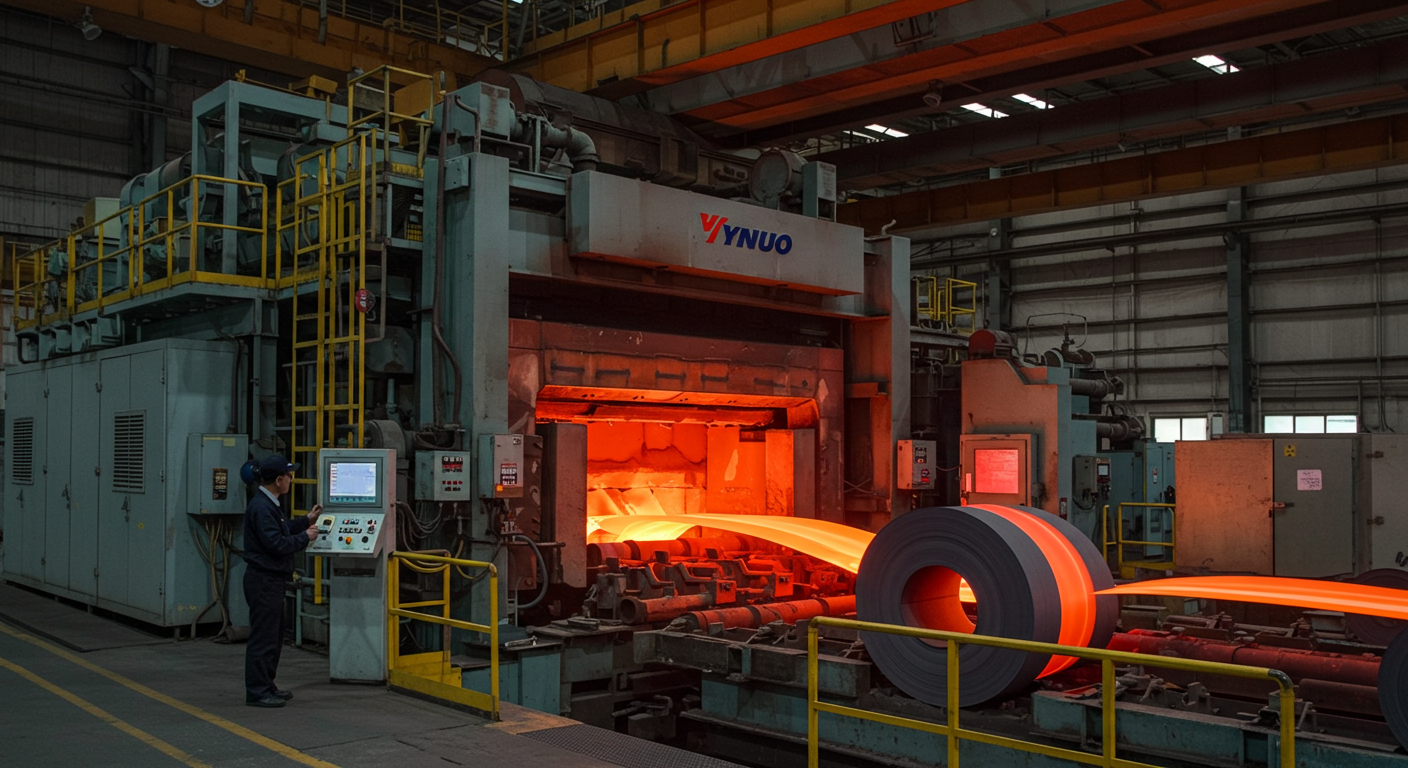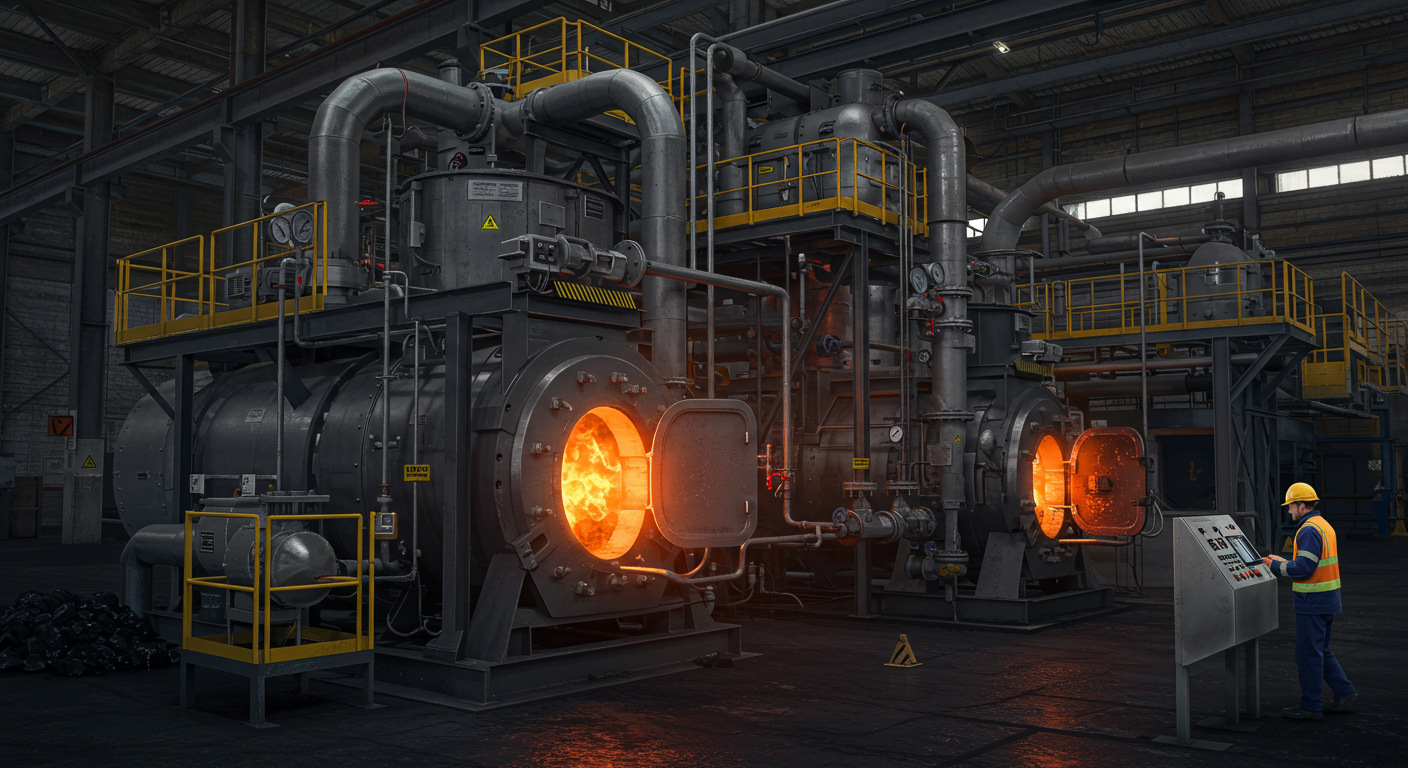
The 30-ton aluminum melting furnace is vital for large-scale industrial metallurgy, processing 30 tons of aluminum per cycle for die-casting, recycling, and aerospace alloy production. These furnaces meet the rising demand for aluminum—lightweight, durable, and recyclable—across automotive, aerospace, and construction sectors. They ensure high-volume molten aluminum supply, efficient scrap processing, and precise alloy quality. With the global aluminum market growing due to sustainability and lightweighting trends, a 30-ton furnace offers scalability and efficiency. This guide explores furnace types, features, applications, and selection criteria to help you choose the right solution.
What Is a 30 Ton Aluminum Melting Furnace?
A 30-ton aluminum melting furnace is a heavy-duty industrial system designed to melt and hold up to 30 tons of aluminum, heating it to its melting point of approximately 660°C (1220°F) for casting, alloying, or further processing. These furnaces are engineered for efficiency, durability, and precision, catering to the demands of large-scale production environments.
The core function of a 30-ton furnace is to provide consistent, high-volume melting capacity. Depending on the design, it may also include features for refining, holding, or pouring molten aluminum. Furnaces are typically constructed with robust refractory linings to withstand extreme temperatures and include advanced control systems to optimize performance.
Popular Types of 30-Ton Furnaces
- Double-Chamber Diesel Furnaces: Fuel-based systems with separate chambers for melting and refining, ideal for regions with limited electricity access.
- Medium-Frequency Induction Furnaces: Electric-powered systems known for rapid melting and precise temperature control.
- Tilting Rotary Furnaces: Versatile designs optimized for scrap recovery and automated pouring.
- Gas-Fired Reverberatory Furnaces: Simple, cost-effective systems commonly used in recycling.
Each type is suited to specific operational needs, from energy availability to production goals. In the next section, we’ll compare these furnace types in detail to highlight their strengths and applications.
Key Furnace Types Compared
Selecting the right furnace type is critical to optimizing performance and cost. Below, we compare the four primary types of 30-ton aluminum melting furnaces, drawing on industry sources for accuracy.
Double-Chamber Diesel Furnace
- Energy Consumption: Approximately 155 kW electric input, supplemented by diesel or fuel-based burners.
- Features:
- Two-stage design with a melting chamber for raw material and a refining chamber for alloy adjustments.
- Robust construction for continuous operation.
- Advantages:
- Cost-effective in areas with high electricity costs or unreliable power grids.
- Suitable for processing diverse aluminum grades, including scrap.
- Challenges:
- Higher emissions compared to electric systems.
- Requires regular maintenance of burners and fuel systems.
- Sources: Available from suppliers like Alibaba, Made-in-China, Exporters India, and Tianfuchenglai.
Medium-Frequency Induction Furnace
- Advantages:
- Rapid Melting: Achieves melt times of 40–60 minutes per ton, 2–3 times faster than fuel-based systems.
- Low Oxidation: Maintains oxidation losses at 1–2%, preserving material quality.
- Precision Control: Offers temperature accuracy within ±5°C, critical for high-spec alloys.
- Features:
- Electromagnetic induction heats aluminum directly, minimizing energy waste.
- Compact footprint compared to fuel-based furnaces.
- Ideal For: Aerospace, automotive, and high-purity alloy production where speed and quality are paramount.
- Challenges: Higher initial costs and dependence on reliable electricity.
- Source: Offered by MF Furnace and other specialized manufacturers.
Tilting Rotary Furnace
- Features:
- Rotates to enhance mixing and heat distribution.
- Automated tilting for precise pouring.
- High recovery rates for scrap aluminum.
- Example: A 30-ton unit designed for Amissa, featuring energy-smart controls, automated pour systems, and enhanced safety protocols.
- Advantages:
- Superior metal recovery, especially for contaminated scrap.
- Reduced energy and salt usage compared to traditional methods.
- Safer operation due to automated controls.
- Challenges: Higher complexity requires skilled operators and regular maintenance.
- Sources: Available from Alibaba, GHI Furnaces, and Machine4Aluminium.
Gas-Fired Reverberatory Furnace
- Common Use: Widely used in scrap recycling due to its straightforward design.
- Features:
- Large, open chamber heated by gas burners.
- Relies on radiant heat transfer from the furnace roof and walls.
- Key Consideration: Efficiency depends on optimized airflow and burner placement to minimize heat loss.
- Advantages:
- Lower initial cost compared to induction or rotary furnaces.
- Simple maintenance for long-term reliability.
- Challenges:
- Lower efficiency (30–55%) compared to induction systems.
- Higher emissions and fuel costs in some setups.
- Sources: Offered by Elka Mehr, GHI Furnaces, and referenced in Wikipedia.
Efficiency & Heat Management
Efficiency is a critical factor in furnace selection, impacting both operational costs and environmental footprint. Here’s how 30-ton furnaces stack up:
- Induction Furnaces: Achieve 65–85% efficiency by directly heating the metal, minimizing energy waste. Their electromagnetic fields ensure uniform heating, reducing hot spots and material loss.
- Gas-Fired Furnaces: Typically range from 30–55% efficiency, though advanced burner designs and airflow optimization can improve performance.
- Diesel Furnaces: Efficiency varies based on fuel quality and burner maintenance, often falling between gas and induction systems.
- Rotary Furnaces: Combine moderate efficiency with high recovery rates, making them cost-effective for scrap processing.
Waste-Heat Recovery
Modern furnaces incorporate waste-heat recovery systems, such as exhaust heat exchangers, to capture and reuse energy. For example:
- Gas-fired and homogenizing setups can redirect exhaust heat to preheat incoming material or power auxiliary systems.
- Tianfuchenglai highlights systems that reduce fuel consumption by up to 20% through heat recovery.
Maintenance for Efficiency
Proper maintenance is essential to sustain efficiency:
- Burning Loss Reduction: Regular cleaning prevents slag buildup, which can insulate heat and reduce melting efficiency.
- Dross Control: Effective skimming and fluxing minimize dross formation, preserving aluminum yield.
- Refractory Care: Monitoring and repairing refractory linings prevent heat leaks and extend furnace life.
Sources like Andritz, Medium, and Elka Mehr emphasize the role of efficiency in reducing costs and emissions.
Control & Safety Features
Operating a 30-ton furnace involves handling molten metal at extreme temperatures, making control and safety paramount. Modern furnaces are equipped with advanced systems to ensure reliability and protect workers.
Automated Controls
- Burner Cycling: Adjusts fuel or power input to maintain consistent temperatures, reducing energy waste.
- PID Temperature Regulation: Uses feedback loops to achieve precise temperature control, critical for alloy production.
- Interlocks: Prevent unsafe operations, such as opening furnace doors during melting.
Safety Measures
- Molten Metal-Water Contact: Water leaks near molten aluminum can cause explosive steam reactions. Furnaces include sensors and drainage systems to mitigate this risk.
- Alarm Interlocks: Trigger warnings for abnormal conditions like overheating or pressure spikes.
- Tilt-Control Systems: In rotary and tilting furnaces, automated tilt mechanisms ensure precise pouring, minimizing spills and accidents.
These features, combined with operator training, create a safe and efficient working environment.
Applications & Case Studies
The versatility of 30-ton aluminum melting furnaces makes them indispensable across industries. Below are key applications and real-world examples.
Die-Casting Plants
- Benefit: Rapid, clean melting cycles support high-volume production of components like automotive parts and industrial fittings.
- Example: Induction furnaces are favored for their speed and low oxidation, delivering consistent molten aluminum for precision casting.
Recycling Facilities
- Benefit: Vertical and tilting rotary furnaces excel in processing scrap, reducing energy and salt usage while maximizing yield.
- Case Study: A recycling plant using a tilting rotary furnace from GHI Furnaces reported a 15% increase in metal recovery compared to traditional methods.
- Sources: Machine4Aluminium and Made-in-China.
Aerospace/Alloy Production
- Benefit: Precise temperature control ensures high-purity alloys meet stringent aerospace standards, such as those for turbine blades and structural components.
- Example: Medium-frequency induction furnaces are used by aerospace manufacturers for their ability to maintain tight temperature tolerances.
These applications demonstrate the adaptability of 30-ton furnaces to diverse industrial needs.
Environmental & Cost Benefits
The environmental and economic advantages of 30-ton aluminum melting furnaces are significant, particularly in recycling and efficient melting.
Energy Savings
- Melting recycled aluminum requires 10–15 times less energy than primary smelting, which involves extracting aluminum from bauxite ore.
- Induction furnaces further enhance savings by minimizing energy waste during melting.
CO₂ Reduction
- Efficient electric melting, particularly with induction furnaces, reduces reliance on fossil fuels, lowering indirect CO₂ emissions.
- Waste-heat recovery systems amplify these benefits by reducing overall energy consumption.
Cost Benefits
- Fuel Savings: Electric and optimized gas furnaces reduce fuel costs compared to traditional systems.
- Salt Reduction: Advanced rotary furnaces minimize fluxing salt usage, lowering material costs and waste.
- Refractory Wear: Durable linings and maintenance practices extend furnace life, reducing replacement costs.
- Labor Efficiency: Automated controls and pouring systems reduce manual intervention, cutting labor expenses.
Sources like Ebner Group and MF Furnace highlight these benefits as key drivers of furnace adoption.
Maintenance & Common Issues
Regular maintenance is critical to ensuring a 30-ton furnace operates at peak performance. Below are common issues and best practices.
Typical Faults
- Sludge Buildup: Accumulated impurities can reduce melting efficiency and damage refractories.
- Inverter Issues: In induction furnaces, electrical components may fail due to overheating or power surges.
- Flashback: In gas-fired systems, improper burner settings can cause dangerous flame reversals.
- Improper Venting: Poor exhaust systems lead to heat loss and unsafe working conditions.
Maintenance Best Practices
- Regular Cleaning: Remove sludge and dross to maintain efficiency and material quality.
- Refractory Monitoring: Inspect linings for cracks or wear, repairing or replacing as needed.
- Controller Upkeep: Calibrate sensors and control systems to ensure accurate operation.
- Burner Maintenance: Clean and adjust burners to prevent flashback and optimize combustion.
Sources like Machine4Aluminium emphasize proactive maintenance to avoid costly downtime.
Selecting Your 30 Ton Furnace
Choosing the right 30-ton furnace requires balancing operational needs, budget, and long-term goals. Key considerations include:
- Melting Cycle Needs:
- Batch Operations: Suited for die-casting or alloy production, where specific quantities are melted per cycle.
- Continuous Operations: Ideal for recycling plants requiring steady molten aluminum supply.
- Budget:
- Capital Expenditure (CapEx): Induction furnaces have higher upfront costs but lower operating expenses.
- Operational Expenditure (OpEx): Gas and diesel furnaces may have lower initial costs but higher fuel and maintenance expenses.
- Key Questions:
- What is the most cost-effective fuel source (electricity, gas, diesel)?
- What level of automation is needed to streamline operations?
- Are energy recovery systems available to reduce costs?
- What after-sales support is provided, including training, warranty, and commissioning?
Engaging with suppliers early to discuss custom specifications and support options can streamline the selection process.
Conclusion
A 30-ton aluminum melting furnace is more than a piece of equipment—it’s a strategic asset that drives efficiency, quality, and sustainability in large-scale aluminum production. Whether you’re powering a die-casting plant, recycling scrap, or producing aerospace-grade alloys, the right furnace can transform your operation. By carefully selecting a furnace type—be it induction, rotary, gas-fired, or diesel—you can optimize performance, reduce costs, and align with environmental goals.
We invite you to contact our team for personalized engineering support, custom specifications, or to schedule a demonstration. Let us help you find the perfect 30-ton furnace to elevate your production capabilities.







